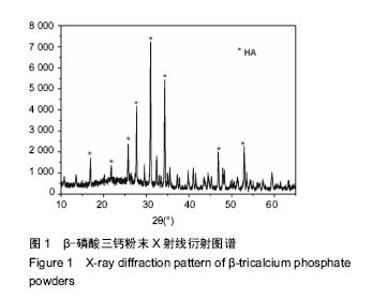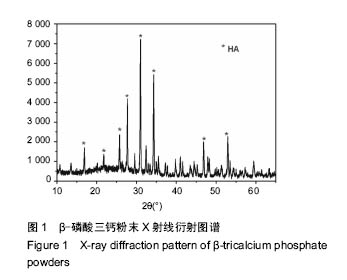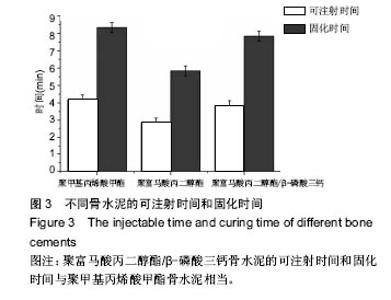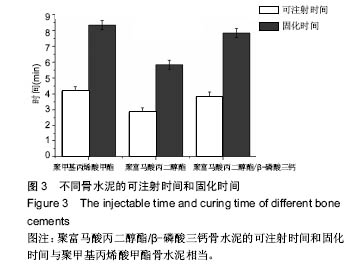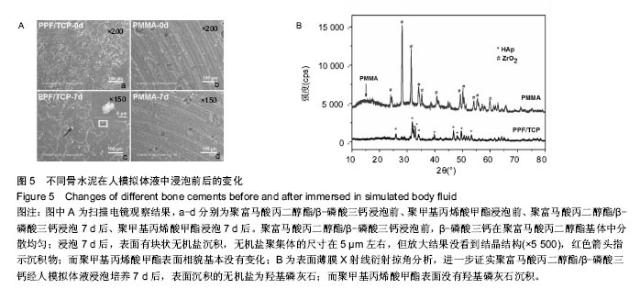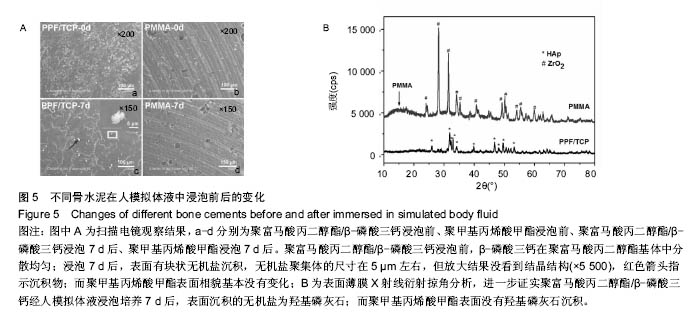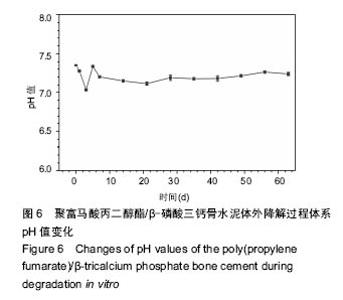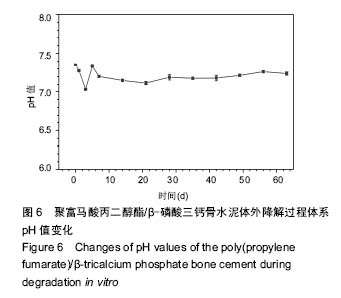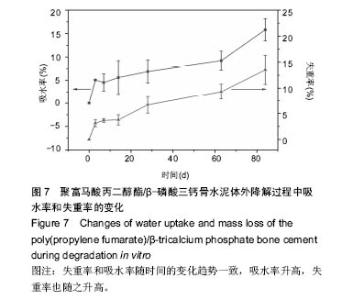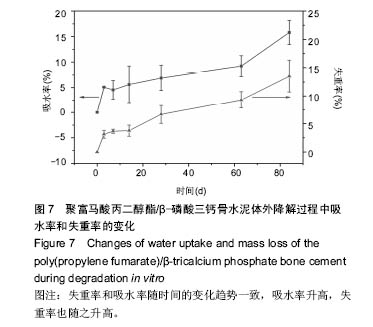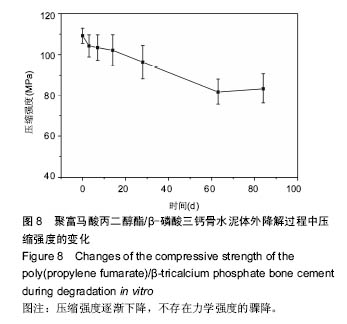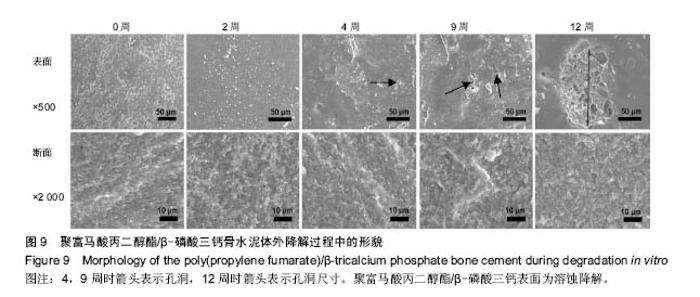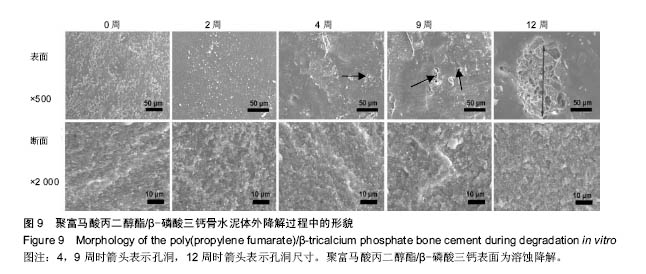Chinese Journal of Tissue Engineering Research ›› 2016, Vol. 20 ›› Issue (52): 7757-7764.doi: 10.3969/j.issn.2095-4344.2016.52.001
In vitro bioactivity and degradability of injectable poly(propylene fumarate)/ beta-tricalcium phosphate bone cement
- 1Key Laboratory for Ultrafine Materials of Ministry of Education, East China University of Science and Technology, Shanghai 200237, China; 2Engineering Research Center for Biomedical Materials of Ministry of Education, East China University of Science and Technology, Shanghai 200237, China
-
Received:2016-09-22Online:2016-12-16Published:2016-12-16 -
Contact:Wang Jing, Associate professor, Master’s supervisor, Engineering Research Center for Biomedical Materials of Ministry of Education, East China University of Science and Technology, Shanghai 200237, China Liu Chang-sheng, Professor, Doctoral supervisor, Key Laboratory for Ultrafine Materials of Ministry of Education, East China University of Science and Technology, Shanghai 200237, China; Engineering Research Center for Biomedical Materials of Ministry of Education, East China University of Science and Technology, Shanghai 200237, China -
About author:Ma Zheng-yu, Master, Engineering Research Center for Biomedical Materials of Ministry of Education, East China University of Science and Technology, Shanghai 200237, China -
Supported by:the National Natural Science Foundation of China, No. 31330028, 31470923, 31271011
CLC Number:
Cite this article
Ma Zheng-yu, Yang Feng, Wang Jing, Liu Chang-sheng.
share this article

2.2 PPF的表征结果 图2为PPF的红外光谱图和1H 核磁谱图。图2A红外结果显示,波数2 442 cm-1处对应PPF的端羟基(OH),2 981 cm-1处对应亚甲基(CH2)峰,1 731cm-1处对应富马酸单元的羰基(C=O)官能团, 1 645 cm-1处对应碳碳双键(C=C)官能团,1 000- 1 300 cm-1为碳氧键(C-O),990 cm-1处为碳氢键(C=C-H)。图2B核磁结果中,化学位移6.8 ppm处为乙烯基质子(CH=CH),5.3 ppm处为次甲基质子(CH), 4.3 ppm处为亚甲基质子(CH2),1.2 ppm处为甲基质子(CH3)。以上结果经过与文献对比,可以证实为PPF结构[25-26]。"

| [1]Boger A,Bohner M,Heini P,et al.Properties of an injectable low modulus PMMA bone cement for osteoporotic bone.J Biomed Mater Res B Appl Biomater. 2008;86B(2):474-482.[2]Jun C,Jin Y,Qiang H,et al.A novel injectable porous surface modified bioactive bone cement for vertebroplasty: an in vivo biomechanical and osteogenic study in a rabbit osteoporosis model. Am J Transl Res.2015;7(3):548-557.[3]Kane RJ,Yue W,Mason JJ,et al.Improved fatigue life of acrylic bone cements reinforced with zirconia fibers.Journal of the Mechanical Behavior of Biomedical Materials.2010;3(7):504-511.[4]Kiaer S. Hip arthroplasty with acrylic prosthesis. Acta Orthopaedica Scandinavica. 1952;22(2): 126-140.[5]Haboush EJ.A new operation for arthroplasty of the hip based on biomechanics, photoelasticity, fast-setting dental acrylic, and other considerations. Bulletin. 1953; 14(2):242-277.[6]Hamizah AS,Mariatti J,Radzali O,et al.New bioactive glass-ceramic: synthesis and application in PMMA bone cement composites.Bio-Med Mater Eng. 2011; 21(4): 247-258.[7]Quan CY,Tang Y,Liu ZZ,et al.Effect of modification degree of nanohydroxyapatite on biocompatibility and mechanical property of injectable poly(methyl methacrylate)-based bone cement.J Biomed Mater Res B Appl Biomater.2016 ;104(3):576-584.[8]Rodriguez L,Chari J,Aghyarian S,et al.Preparation and Characterization of Injectable Brushite Filled-Poly (Methyl Methacrylate) Bone Cement. Materials.2014; 7(9):6779-6795.[9]Santos JGF,Pita VJRR,Melo PA,et al.Effect of process variables on the preparation of artificial bone cements.Braz J Chem Eng.2013;30(4):4795-4801.[10]Cheng Y,Yang HC,Cho JH,et al.The effect of N -acetylcysteine addition on the polymerization behavior of PMMA bone cement.Macromol Res. 2012;20(9): 928-938.[11]Yue S,Fang Y,Wijn JRD,et al.Physicochemical properties and mineralization assessment of porous polymethylmethacrylate cement loaded with hydroxyapatite in simulated body fluid.Mater Sci Eng C.2016;61:190-198.[12]Liu Z,Yong T,Kang T,et al.Synergistic effect of HA and BMP-2 mimicking peptide on the bioactivity of HA/PMMA bone cement.Colloids Surf B Biointerfaces. 2015;131:39-46.[13]Kang T,Hua X,Liang P,et al.Synergistic reinforcement of polydopamine-coated hydroxyapatite and BMP2 mimicking peptide on the bioactivity of PMMA-based cement. Compos Sci Technol.2016;123:232-240.[14]Chen L,Zhai D, Huan Z,et al.Silicate bioceramic/PMMA composite bone cement with distinctive physicochemical and bioactive properties.Rsc Advances.2015;5(47): 37314-37322.[15]Shinzato S,Nakamura T,Kawanabe K,et al. PMMA-based bioactive cement: Effect of CaF 2 on osteoconductivity and histological change with time .J Biomed Mater Res B Appl Biomater. 2003;65(2): 262-271.[16]Hernández ML,Ruiz JEG,Ramos AP,et al.PMMA/Ca2+ Bone Cements. Hydrolytic Properties and Bioactivity. Polímeros.2011;22(4):390-394.[17]Fisher JP,Holland TA,Dean D,et al.Part II.In vitro degradation photoinitiated cross-linking of the biodegradable polyester poly(propylene fumarate). Biomacromolecules.2003;4(5):1335-1342.[18]Timmer MD,Ambrose CG,Mikos AG.Evaluation of thermal- and photo-crosslinked biodegradable poly(propylene fumarate)-based networks.J Biomed Mater Res A.2003; 66(4):811-818.[19]Shavandi A,Bekhit AE-DA,Sun Z,et al.Injectable gel from squid pen chitosan for bone tissue engineering applications.J Sol-Gel Sci Technol.2015:1-13.[20]Dávila J,Freitas M,Inforçatti Neto P,et al.Fabrication of PCL/β-TCP scaffolds by 3D mini‐screw extrusion printing.J Appl Polym Sci.2016;133: 43031.[21]Shao H,He Y,Fu J,et al.3D printing magnesium-doped wollastonite/β-TCP bioceramics scaffolds with high strength and adjustable degradation.J Eur Ceram Soc.2016;36(6):1495-1503.[22]Kasper FK,Tanahashi K,Fisher JP,et al. Synthesis of poly(propylene fumarate).Nat Protoc. 2009;4(4): 518-525.[23]Shung AK,Timmer MD,Jo S,et al.Kinetics of poly(propylene fumarate) synthesis by step polymerization of diethyl fumarate and propylene glycol using zinc chloride as a catalyst.J Biomat Sci Polym E.2002;13(1):95-108.[24]杨洪,赵培正.液相沉淀法制备β-磷酸三钙[J].河南师范大学学报:自然科学版,2007, 35(1):122-124.[25]Kasper FK,Tanahashi K,Fisher JP,et al.Synthesis of poly (propylene fumarate).Nat Protoc. 2009;4(4): 518-525.[26]Shahbazi S,Jafari Y,Moztarzadeh F,et al.Evaluation of effective parameters for the synthesis of poly (propylene fumarate) by response surface methodology.J Appl Polym Sci.2014;131(20):563-571.[27]Schmidt CE,Leach JB.Neural tissue engineering: strategies for repair and regeneration.Annu Rev Biomed Eng.2003;5(1):293-347.[28]Wang S,Cai L.Polymers for Fabricating Nerve Conduits.Int J Polym Sci.2010;2010:1-20.[29]Cai ZY,Yang DA,Zhang N,et al.Poly(propylene fumarate)/(calcium sulphate/β-tricalcium phosphate) composites:Preparation,characterization and in vitro degradation.Acta Biomater.2009;5(2):628-635.[30]Wang S,Kempen DH,De Ruiter GC,et al.Molecularly engineered biodegradable polymer networks with a wide range of stiffness for bone and peripheral nerve regeneration. Adv Funct Mater. 2015;25(18): 2715-2724.[31]Hua J,Gebarowska K,Dobrzynski P,et al.Influence of chain microstructure on the hydrolytic degradation of copolymers from 1, 3-trimethylene carbonate and L-lactide.J Polym Sci.2009;47(15):3869-3879. |
| [1] | Zhang Tongtong, Wang Zhonghua, Wen Jie, Song Yuxin, Liu Lin. Application of three-dimensional printing model in surgical resection and reconstruction of cervical tumor [J]. Chinese Journal of Tissue Engineering Research, 2021, 25(9): 1335-1339. |
| [2] | Zeng Yanhua, Hao Yanlei. In vitro culture and purification of Schwann cells: a systematic review [J]. Chinese Journal of Tissue Engineering Research, 2021, 25(7): 1135-1141. |
| [3] | Xu Dongzi, Zhang Ting, Ouyang Zhaolian. The global competitive situation of cardiac tissue engineering based on patent analysis [J]. Chinese Journal of Tissue Engineering Research, 2021, 25(5): 807-812. |
| [4] | Wu Zijian, Hu Zhaoduan, Xie Youqiong, Wang Feng, Li Jia, Li Bocun, Cai Guowei, Peng Rui. Three-dimensional printing technology and bone tissue engineering research: literature metrology and visual analysis of research hotspots [J]. Chinese Journal of Tissue Engineering Research, 2021, 25(4): 564-569. |
| [5] | Chang Wenliao, Zhao Jie, Sun Xiaoliang, Wang Kun, Wu Guofeng, Zhou Jian, Li Shuxiang, Sun Han. Material selection, theoretical design and biomimetic function of artificial periosteum [J]. Chinese Journal of Tissue Engineering Research, 2021, 25(4): 600-606. |
| [6] | Liu Fei, Cui Yutao, Liu He. Advantages and problems of local antibiotic delivery system in the treatment of osteomyelitis [J]. Chinese Journal of Tissue Engineering Research, 2021, 25(4): 614-620. |
| [7] | Li Xiaozhuang, Duan Hao, Wang Weizhou, Tang Zhihong, Wang Yanghao, He Fei. Application of bone tissue engineering materials in the treatment of bone defect diseases in vivo [J]. Chinese Journal of Tissue Engineering Research, 2021, 25(4): 626-631. |
| [8] | Zhang Zhenkun, Li Zhe, Li Ya, Wang Yingying, Wang Yaping, Zhou Xinkui, Ma Shanshan, Guan Fangxia. Application of alginate based hydrogels/dressings in wound healing: sustained, dynamic and sequential release [J]. Chinese Journal of Tissue Engineering Research, 2021, 25(4): 638-643. |
| [9] | Chen Jiana, Qiu Yanling, Nie Minhai, Liu Xuqian. Tissue engineering scaffolds in repairing oral and maxillofacial soft tissue defects [J]. Chinese Journal of Tissue Engineering Research, 2021, 25(4): 644-650. |
| [10] | Xing Hao, Zhang Yonghong, Wang Dong. Advantages and disadvantages of repairing large-segment bone defect [J]. Chinese Journal of Tissue Engineering Research, 2021, 25(3): 426-430. |
| [11] | Chen Siqi, Xian Debin, Xu Rongsheng, Qin Zhongjie, Zhang Lei, Xia Delin. Effects of bone marrow mesenchymal stem cells and human umbilical vein endothelial cells combined with hydroxyapatite-tricalcium phosphate scaffolds on early angiogenesis in skull defect repair in rats [J]. Chinese Journal of Tissue Engineering Research, 2021, 25(22): 3458-3465. |
| [12] | Wang Hao, Chen Mingxue, Li Junkang, Luo Xujiang, Peng Liqing, Li Huo, Huang Bo, Tian Guangzhao, Liu Shuyun, Sui Xiang, Huang Jingxiang, Guo Quanyi, Lu Xiaobo. Decellularized porcine skin matrix for tissue-engineered meniscus scaffold [J]. Chinese Journal of Tissue Engineering Research, 2021, 25(22): 3473-3478. |
| [13] | Mo Jianling, He Shaoru, Feng Bowen, Jian Minqiao, Zhang Xiaohui, Liu Caisheng, Liang Yijing, Liu Yumei, Chen Liang, Zhou Haiyu, Liu Yanhui. Forming prevascularized cell sheets and the expression of angiogenesis-related factors [J]. Chinese Journal of Tissue Engineering Research, 2021, 25(22): 3479-3486. |
| [14] | Liu Chang, Li Datong, Liu Yuan, Kong Lingbo, Guo Rui, Yang Lixue, Hao Dingjun, He Baorong. Poor efficacy after vertebral augmentation surgery of acute symptomatic thoracolumbar osteoporotic compression fracture: relationship with bone cement, bone mineral density, and adjacent fractures [J]. Chinese Journal of Tissue Engineering Research, 2021, 25(22): 3510-3516. |
| [15] | Liu Liyong, Zhou Lei. Research and development status and development trend of hydrogel in tissue engineering based on patent information [J]. Chinese Journal of Tissue Engineering Research, 2021, 25(22): 3527-3533. |
| Viewed | ||||||
|
Full text |
|
|||||
|
Abstract |
|
|||||
